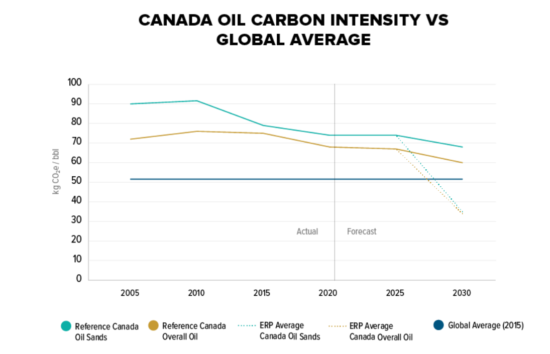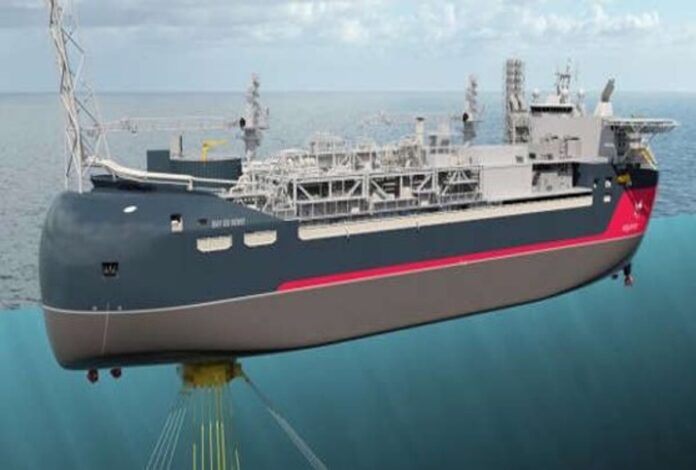It is hard to understand the scientific basis for a decision by Canada’s Minister of Environment to approve the Bay-du-Nord offshore oil project that is scheduled to go onstream by 2028, two years before the country’s 2030 deadline to reduce emissions from the energy sector by 31% from 2005 levels (42% below 2019).
The decision will bring an oil field into production that will add at a minimum 300 million barrels of what is being described as low-intensity crude oil which will at some point be burned in the atmosphere.
The Ministry in its 2030 plan has called for the fossil fuel industry to reduce overall carbon emissions from 191 megatons in 2019 to 110 by 2030. But when you add Bay-du-Nord to the Trans-Mountain Pipeline project and increased oil sands production, one could claim the Ministry is suffering from cognitive dissonance. Not familiar with that term? It describes a psychological condition when beliefs don’t line up with actions. In this case, the belief is in the 2030 numbers, and the actions are current policy decisions.
How does the Ministry justify the latter? Two arguments:
- The real gains to be made in terms of Canada’s emissions reductions from the oil and gas sector will come from removing methane from orphan wells, from current flaring in operations, and from fracking. In the Minister’s mandate letter making progress on methane emission reductions was singled out with instructions to regulate the fossil fuel industry to reduce methane from exploration and operations by 75%, in 2030, from 2012 levels.
- The phrase “carbon intensification,” in the government’s news release yesterday, describes reducing the greenhouse gasses (GHG) produced by every barrel of oil or cubic metre of natural gas through improvements in processes, distribution, and storage.
In its 2030 emissions reduction plan, the government is committed to capping GHG emissions “at a pace and scale needed to achieve net-zero by 2050.” To do this, the industry is asked to demonstrate “best-in-class” low emissions performance on any new project. The aforementioned news release features a graph reproduced below that shows a downward trend for carbon intensity in units of production over time.

Is there an argument to stop all new projects in an effort to meet carbon emission reduction targets, or can the Ministry justify continuing to back new ones like Bay-du-Nord?
The second position is the one currently being taken with an explanation that points to current global realities:
- The disruption of oil and natural gas supply to Europe because of Russia’s invasion of Ukraine and the application of economic sanctions.
- Global demand for oil and gas is unabated and will continue to grow for at least another decade before 100% electrification, hydrogen, and other zero-emission energy technologies and alternate fuels become ubiquitous.
Any new project the Ministry considers for approval it states will have to demonstrate:
- advanced technologies and best environmental practices to minimize emissions.
- best performance standards from low emissions projects found elsewhere.
- meet the national goal of achieving net-zero emissions by 2050 even if the projects continue to operate past the mid-century mark.
The value proposition, the Minister of Natural Resources who is quoted in the news release, states is that “fuels…produced in an ultra-low carbon fashion will have significant value internationally going forward.” That makes Canada’s energy offerings more globally competitive.
Measuring carbon intensity is doing the bidding of the oil industry which has been advocating for it for more than a decade. In the oil sands where GHG emissions have risen 137% from 2005 to 2019, the plea to the government has been to look at the carbon intensification numbers which have only gone up a fraction. The Pembina Institute, which tracks emissions as well as barrels and cubic metres of output notes that per-barrel intensity has been outpaced by total production which begs the question, can the industry continue to add more production and achieve the emission targets for 2030 let alone 2050?
As for Bay-du-Nord, the project was deemed by the Minister of the Environment to produce a minimum of “significant adverse environmental effects.” The 137 mitigation requirements attached to its approval are the saving grace that is allowing for the decision in its favour.
The favourable decision doesn’t factor in what will inevitably happen to the end products Bay-du-Nord produces, oil that will be burned and pollute. Neither the Ministry of Environment and Climate Change, nor the Ministry of Natural Resources, both referenced and quoted in the Government’s news release, say anything about consumer end-use.















